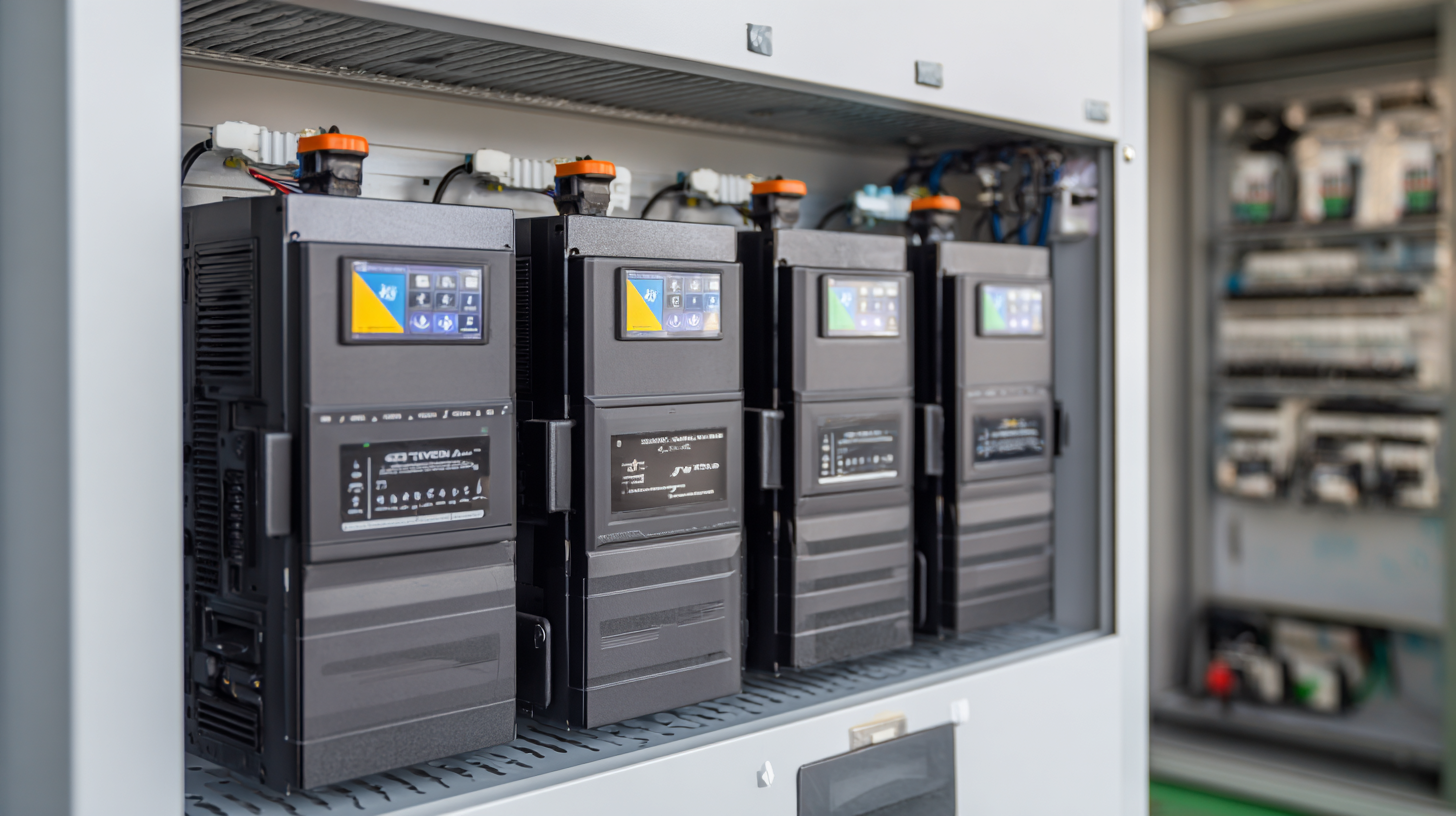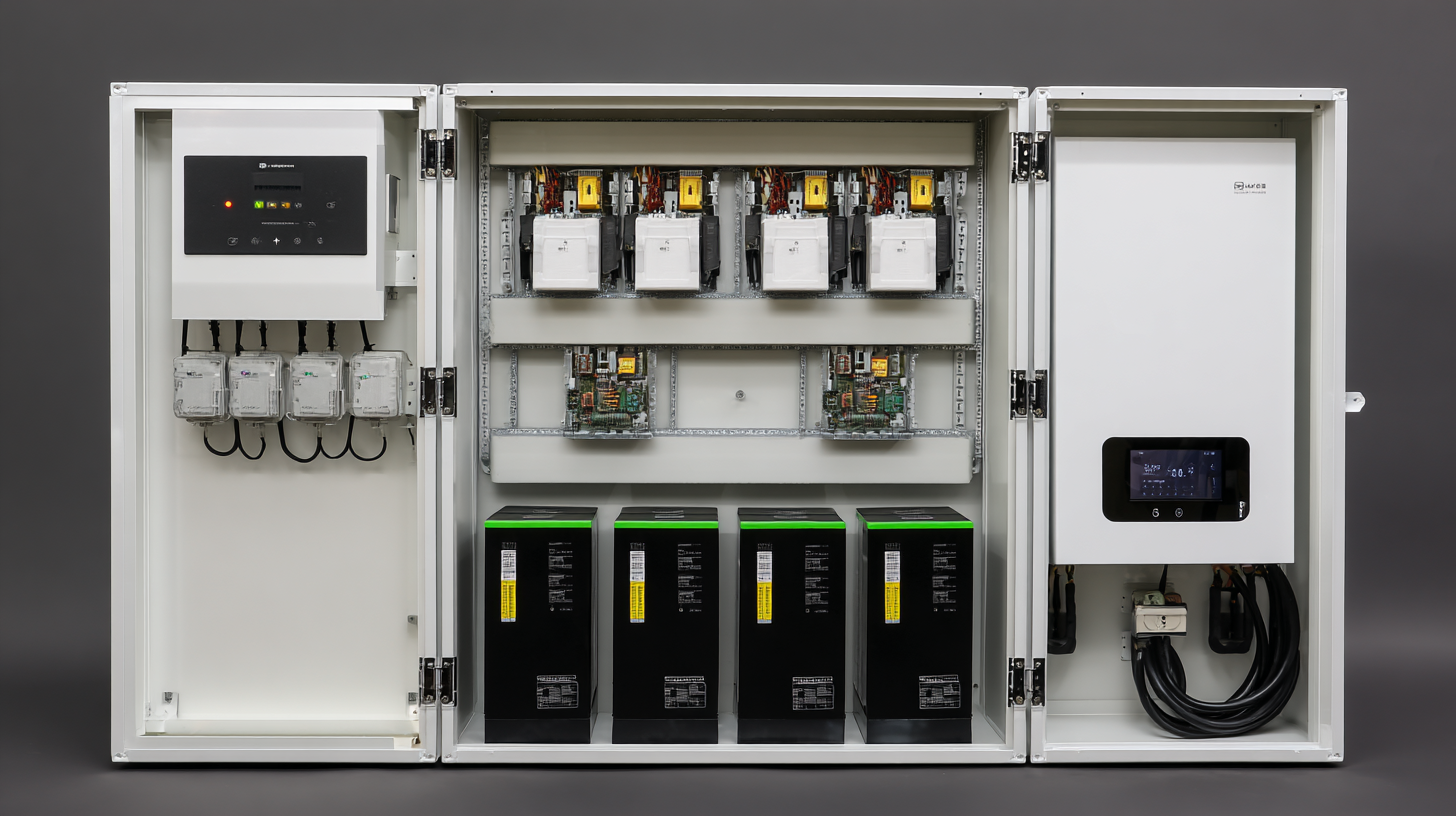Factory Tour
Chinese Excellence in Manufacturing the Best Power Wall Lifepo4 Battery 10kwh 200ah for Global Trust
 In recent years, the demand for reliable and efficient energy storage solutions has skyrocketed, driven by the global shift towards renewable energy sources. Among these solutions, the Power Wall Lifepo4 Battery 10kwh 200ah has emerged as a leading choice, combining high performance with safety and longevity. According to a recent report by Markets and Markets, the global energy storage market is expected to grow from $10.5 billion in 2020 to $26.2 billion by 2025, representing a CAGR of 19.2%. The shift to Lithium Iron Phosphate (LiFePO4) technology is particularly noteworthy, as it is recognized for its stable chemistry and thermal safety, positioning the Power Wall Lifepo4 Battery 10kwh 200ah as an optimal solution for residential and commercial applications alike. As manufacturers in China continue to innovate and set benchmarks in quality and efficiency, global trust in this technology is poised to grow, making it essential to understand the best practices for leveraging this outstanding energy storage option.
In recent years, the demand for reliable and efficient energy storage solutions has skyrocketed, driven by the global shift towards renewable energy sources. Among these solutions, the Power Wall Lifepo4 Battery 10kwh 200ah has emerged as a leading choice, combining high performance with safety and longevity. According to a recent report by Markets and Markets, the global energy storage market is expected to grow from $10.5 billion in 2020 to $26.2 billion by 2025, representing a CAGR of 19.2%. The shift to Lithium Iron Phosphate (LiFePO4) technology is particularly noteworthy, as it is recognized for its stable chemistry and thermal safety, positioning the Power Wall Lifepo4 Battery 10kwh 200ah as an optimal solution for residential and commercial applications alike. As manufacturers in China continue to innovate and set benchmarks in quality and efficiency, global trust in this technology is poised to grow, making it essential to understand the best practices for leveraging this outstanding energy storage option.
The Growing Demand for Lifepo4 Batteries in Global Markets
The demand for lithium iron phosphate (LFP) batteries has surged in global markets, driven by their superior safety, longevity, and environmental benefits compared to traditional lithium-ion batteries. As industries pivot towards sustainable energy sources, LFP batteries, particularly in the context of energy storage solutions like power walls, are increasingly favored. With a capacity such as the 10kWh 200Ah models, these batteries offer consumers reliable and efficient energy storage for residential and commercial applications, thus catering to the growing need for renewable energy integration.
In addition to this rising demand, the recycling of spent lithium-ion batteries has gained significant attention, addressing environmental concerns associated with battery waste. As the global lithium market faces various challenges, including fluctuating prices, the push for recycling and sustainable battery technologies stands out as critical. This shift not only helps mitigate resource scarcity but also ensures that the lithium supply chain remains robust and environmentally responsible, paving the way for continued innovation and investment in battery technologies in the coming years.

Innovative Applications of 10kWh 200Ah Power Wall Batteries
The innovative applications of 10kWh 200Ah Power Wall batteries highlight the remarkable advancements in energy storage technology, particularly in the realm of lithium iron phosphate (LiFePO4) batteries. These batteries have gained popularity due to their safety, longevity, and reliability. With a lifespan exceeding 10 years and the capacity to deliver substantial power output, they are increasingly being used in both residential and commercial energy storage solutions. The 48V configuration is particularly desirable for solar power systems, providing seamless integration with solar panels and inverters.
Recent industry reports indicate that the global market for energy storage systems is projected to reach $546.65 billion by 2035, driven by the increasing demand for renewable energy sources and energy independence. The development of wall-mounted batteries like the 10kWh 200Ah models is aligning with this trend, allowing users to effectively store energy generated during peak solar production hours. These systems ensure that energy is available when needed, reducing reliance on conventional grid power and ultimately contributing to a more sustainable future. As manufacturers continue to innovate, the efficiency and affordability of these batteries will further enhance their widespread adoption in homes and businesses around the world.
Chinese Excellence in Manufacturing the Best Power Wall Lifepo4 Battery 10kwh 200ah for Global Trust - Innovative Applications of 10kWh 200Ah Power Wall Batteries
| Specification | Details |
|---|---|
| Battery Type | LiFePO4 (Lithium Iron Phosphate) |
| Nominal Voltage | 48V |
| Capacity | 10 kWh (200 Ah) |
| Cycle Life | > 6000 cycles |
| Temperature Range | -20°C to 60°C |
| Weight | Approx. 120 kg |
| Dimensions (L x W x H) | 600 x 700 x 200 mm |
| Integration | Compatible with various solar systems |
| Safety Features | Overcharge, over-discharge, short circuit protection |
Success Stories: How Lifepo4 Batteries Power Industries Worldwide
The global demand for sustainable energy solutions has positioned LiFePO4 batteries at the forefront of technological advancements in energy storage. Recent reports indicate that the lithium-ion battery market is expected to reach $150 billion by 2025, driven largely by the increasing adoption of electric vehicles and renewable energy systems. Among the various types of lithium batteries, LiFePO4 (Lithium Iron Phosphate) has gained immense popularity due to its enhanced safety, stability, and longer lifecycle, making it an ideal choice for both industrial applications and residential energy systems.
In industries worldwide, the versatility of LiFePO4 batteries is evident in their application across various sectors, from renewable energy storage to electric mobility. According to a report by Allied Market Research, the growing need for energy storage solutions to support solar and wind energy is predicted to expand the LiFePO4 battery market significantly, with a compound annual growth rate (CAGR) of over 20% from 2020 to 2027. Companies leveraging these batteries for their energy systems not only enhance operational efficiency but also contribute to global sustainability efforts, leading the way towards a greener, more reliable energy future.
Environmental Benefits of Utilizing Lifepo4 Technology
The adoption of LiFePO4 (Lithium Iron Phosphate) technology in power wall batteries is gaining traction due to its remarkable environmental advantages. These batteries are not only designed to offer exceptional performance and longevity, but they also significantly reduce the ecological footprint associated with energy storage. By utilizing LiFePO4, manufacturers create batteries that are less harmful to the environment, as they contain non-toxic materials and have a longer life cycle compared to traditional lithium-ion batteries. This means fewer batteries end up in landfills, contributing to a healthier planet.

Furthermore, LiFePO4 batteries are highly efficient when it comes to energy use, holding their charge for longer periods and providing stable power output. This reliability makes them ideal for renewable energy applications, such as solar power systems, where they can effectively store energy generated during the day for use at night. As a result, more consumers and businesses are turning to these environmentally-friendly solutions, helping to decrease reliance on fossil fuels and promoting sustainable energy practices globally.
By investing in LiFePO4 technology, we are taking a crucial step towards a greener future.
Comparative Analysis: Lifepo4 vs Other Battery Technologies in Manufacturing
The global value of lithium iron phosphate (LiFePO4) batteries is projected to reach $15.28 billion in 2023, with a remarkable growth forecast to $19.07 billion in 2024 and an astounding $124.42 billion by 2032. This growth reflects the increasing adoption of these batteries in various sectors, largely driven by their affordability and high safety profile. In a comparative analysis of battery technologies, LiFePO4 stands out against other options, notably offering increased thermal stability and a longer lifecycle, making it a preferred choice for many manufacturers.
Tips: When considering battery options for your projects, always assess your specific energy needs and safety requirements. LiFePO4 batteries not only perform better but come with lower maintenance costs over time. Additionally, with the rising demand in solar generator markets, which is expected to grow from $591 million in 2024 to over $1 billion by 2032, integrating LiFePO4 batteries can enhance the overall efficiency of renewable energy systems.
As the landscape of energy storage evolves, the infusion of cutting-edge technologies—including solid-state batteries—poses both opportunities and challenges. Understanding the strengths of LiFePO4 over alternatives will enable businesses to make informed decisions that align with future energy trends.






